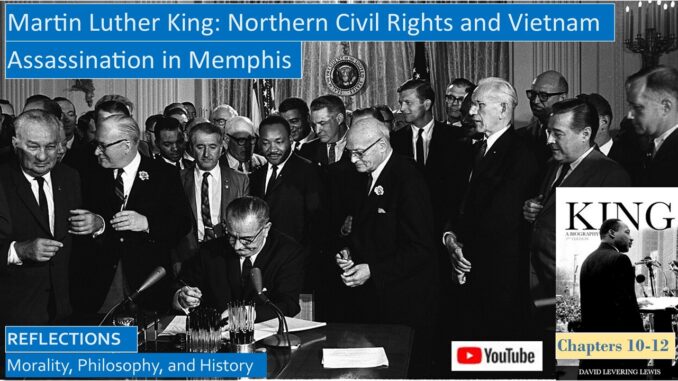
Today we will reflect on the final Civil Rights struggles and causes championed by Martin Luther King before his untimely assassination in Memphis. We wonder:
How did John F Kennedy and Lyndon Johnson differ in their support for civil rights for blacks?
Why were the Civil Rights struggles in New York and Chicago more problematic than those in Birmingham, Selma, and the Deep South?
Did Martin Luther King’s opposition to the War in Vietnam detract from his struggles and protests furthering civil rights?
David Levering Lewis begins a chapter in his biography of Martin Luther King with a quote from Langston Hughes,
Negroes sweet and gentle,
Meek, humble and kind,
Beware the day
They change their minds.”[1]
Script for this video, with more Amazon book links: https://www.slideshare.net/slideshows/martin-luther-king-ss-lbj-great-society-and-vietnam-northern-civil-rights-biography-ch-1012pdf/265591517
YouTube video for this blog: https://youtu.be/IeKssG8mrlk
CHANGING PRIORITIES AND PRIOR REFLECTIONS
As in all revolutions, one problem faced by Martin Luther King was that the longer he fought his civil rights revolution, the greater role that extreme militants would play. Martin Luther King was sincerely devoted to nonviolent protests, but his lesson from Albany was that if he halted demonstrations where violence bled into the marches, particularly under the provocation of brutal police, then the momentum of the protests was lost.
Martin Luther King had reservations about the growing Black Power Movement. Martin said, “In spite of the positive aspects of Black Power,” “its negative values” “prevent it from having the substance and program to become the basic strategy for the civil rights movement.” Martin saw Black Power as defeatist, “Beneath all the satisfaction of a gratifying slogan, Black Power is a nihilistic philosophy born out of the conviction that the Negro can’t win. It was born from the wounds of despair and disappointment.”[2]
Our biographer Lewis lists the main issues that Martin Luther King and the SCLC were considering as they expanded their civil rights campaigns to include Northern cities:
- “The growing conviction among whites that the blacks, with federal backing, were moving too rapidly.
- The fierce objections by black militants that racial progress had not only been too slow but was being subtly manipulated by powerful whites.
- Practical programs to deal with urban and Northern black poverty.”
- Whether the military spending on the War in Vietnam was hampering funding for civil rights programs.[3]
The problem was that although combatting urban black poverty was the more important battle, these were not simple battles, they did not make for good television like the dramatic protests in places like Birmingham and Selma, where there were snarling dogs, fire hoses, and villainous Southern state troopers with clubs and ominous sunglasses.
We are now reflecting on the closing chapters of the life of Martin Luther King. Previously we have reflected on Martin’s youth and schooling, then the Montgomery Bus Boycott, when Martin Luther King first gained national prominence due to the national media attention. Martin then assisted struggles to desegregate Lunch Counters with student sit-in protests, and the Freedom Rider protesters seeking to desegregate interstate buses and bus stations. Next came the brutality and bombing in Birmingham, where four children were martyred when their church was bombed during Sunday School.
Martin Luther King, Youth and Schooling, Lewis’ Biography Chapters, 1 and 2
https://seekingvirtueandwisdom.com/martin-luther-king-youth-and-schooling-lewis-biography-chapters-1-and-2/
https://youtu.be/_64FMZ6AlEg
Martin Luther King and Rosa Parks, Montgomery Bus Boycott, Lewis’ Biography, Chapter 3
https://seekingvirtueandwisdom.com/martin-luther-king-and-rosa-parks-montgomery-bus-boycott-lewis-biography-chapter-3/
https://youtu.be/TuiyFycWE-U
Martin Luther King, Lunch Counters, Freedom Riders, and Albany, Lewis’ Biography Chapters 4-6
https://seekingvirtueandwisdom.com/martin-luther-king-lunch-counters-freedom-riders-and-albany-lewis-biography-chapters-4-6/
https://youtu.be/_TLt2fQqL4w
Martin Luther King, Birmingham, Nonviolent Protests v Bombs and Brutality, Biography Chapter 7
https://seekingvirtueandwisdom.com/martin-luther-king-birmingham-nonviolent-protests-v-bombs-and-brutality-biography-chapter-7/
https://youtu.be/5y0v0tYMdy8
We also reflected on his Letter From a Birmingham Jail, comparing it to Hannah Arendt’s Banality of Evil, on the trial of Adolph Eichmann, the Nazi bureaucrat that oversaw the Nazi Final Solution, which was the Nazi death camps and concentration camps that exterminated many Jews. This was followed by the hopeful March on Washington and Martin Luther King’s I Have a Dream speech, which was followed by the brutality experienced in the Marches from Selma to Montgomery.
Comparing MLK’s Letter from Birmingham Jail with Hannah Arendt’s Banality of Evil in Nazi Germany
http://www.seekingvirtueandwisdom.com/comparing-martin-luther-kings-letter-from-the-birmingham-jail-with-hannah-arendts-the-banality-of-evil/
https://youtu.be/PqFAUEXbi8k
Martin Luther King, I Have a Dream Speech, March on Washington DC, Biography Chapter 8
https://seekingvirtueandwisdom.com/martin-luther-king-i-have-a-dream-speech-march-on-washington-dc-biography-chapter-8/
https://youtu.be/IJ64y3nQA4Q
Martin Luther King, Bloody Struggles in Mississippi and Selma, Lewis’ Biography Chapters 8-9
https://seekingvirtueandwisdom.com/martin-luther-king-bloody-struggles-in-mississippi-and-selma-lewis-biography-chapters-8-9/
https://youtu.be/eMA_7vLYcdM
MARTIN LUTHER KING AND LBJ, GREAT SOCIETY
Why was President Lyndon Baines Johnson such a prominent figure in Civil Rights history? Although both John F Kennedy and Lyndon Johnson supported greater civil rights for blacks, their experience and dedication to the cause differed. John F Kennedy’s support for civil rights, though genuine, was more reactive. Like FDR before him, he relied on the actions and oratory of the civil rights leaders to propel the issues into the national consciousness, seeking to benefit politically from his support.
In contrast, Lyndon Johnson was more proactive in his support of civil rights, he sought to consult with civil rights leaders to coordinate their tactics and strategy so he could push effective Civil Rights legislation. John F Kennedy was an aristocrat, but Lyndon Johnson was drawing from his personal experiences as a young teacher in rural Texas, he saw how abject poverty affected the families of his young Mexican students.
One practical implication was that their tactics differed. While Martin found that the Kennedy administration was usually receptive to pleas for the Justice Department to intervene to prevent unfair treatment of protesters, this support was sometimes withheld by the Johnson administration, as in the Selma dispute, when LBJ thought the resulting publicity of the resulting abuse and violence would further the cause for Civil Rights.
In early July, President Lyndon Johnson signed the Civil Rights Act of 1964. Martin Luther King and other black leaders were invited to the signing ceremony. These two leaders had consulted closely on tactics to pass this important legislation, which along with the Supreme Court decisions, would be critical in promoting civil rights and changing the lives of black citizens for the better.
But two weeks later, rioting and looting erupted in Harlem, where white merchants and police were assaulted. LBJ immediately conferred with the leading civil rights activists, chief among them was Martin Luther King, who traveled to New York City, where black leaders issued a statement condemning the rioting, asking that demonstrations be suspended until after the November election. This rioting endangered white support for the upcoming voter reform legislation, as white support for civil rights wavered whenever there was rioting. Doris Kearns emphasizes this consultation between LBJ and Martin, it is not as prominently mentioned in Lewis’ biography.[4]
More destructive riots erupted in Los Angeles, California. When Martin toured the smoldering ruins with Andrew Young and other black leaders, he discovered that many of the young blacks had not even heard of him, and some rioters boasted, “WE WON.” Martin asked, “How can you say you won? Thirty-four Negroes are dead, your community is destroyed, and whites are using the riots as an excuse for inaction!”[5]
Martin Luther King in his book, Where Do We Go From Here, observed that “Jobs are harder and costlier than voting rolls. The eradication of slums housing millions is far more complex than integrating buses and lunch counters.”[6]
These thoughts were echoed by Lyndon Johnson in his 1965 speech to the graduates of the leading black Howard University: “There is no single easy answer.” “Jobs are part of the answer, they bring the income which permits a man to provide for his family. Decent homes in decent neighborhoods and a chance to learn are part of the answer. Care of the sick is part of the answer.” He again committed his administration to improving life for ordinary Americans.
The problems faced by Northerners were both complex and intractable. As Lewis notes: “The illusion of freedom in the North had masked its hideous economic conditions: matriarchal families whose morality was discouraged by perpetual dependence on welfare programs, levels of unemployment that had risen,” and massive projects of multistory “substandard housing that had few equivalents in the South.” The administration had passed a billion-dollar program to fight poverty, but these sums barely touched the problems of pervasive poverty.[7]
MARTIN LUTHER KING AND LBJ, VIETNAM WAR PROTESTS
Soon after Selma, Martin Luther King began expressing his concern about the growing casualties in the unpopular Vietnam War. But the SCLC voted that Martin could publicly only express his opposition to the war as a private citizen, not as an officer representing the SCLC. Their fear was this position would endanger the administration’s support for civil rights.[8] The NAACP and the Urban League shared these concerns, and Martin was initially stunned by the negative reaction that his stance against the war provoked in his black audiences.[9] Did his protests against the War in Vietnam cause LBJ to be less than forthcoming when Martin requested help from the Justice Department when being threatened by white supremacists? Perhaps.
How much did Martin Luther King’s opposition to the War in Vietnam distract from the Civil Rights struggle? Certainly, it diverted Johnson’s attention away from civil rights struggles. Certainly, his opposition to the war muddled the civil rights messages of Martin Luther King. More details are in Lewis’ biography, we will only include this quote: “The truth is that it is sinful for any of God’s children to brutalize any of God’s other children, no matter from what side the brutalization comes.” The destruction of Vietnamese villages proved “that we still believe that might makes right.”[10]
PROTESTING SUBSTANDARD HOUSING IN CHICAGO
Our biographer Lewis states that “there are dozens of cities in America blighted by bossism, poverty, crime, corruption, police brutality, and civic indifference to the poor and the racially disadvantaged.” Chicago, in particular, faces all these problems. “Of its 3.5 million people” in 1964 “nearly one million are black, and almost half of these are impoverished. Of those who are not, not many are well above the poverty line. And the overwhelming majority are concentrated in the appalling residential slums on the city’s south and west sides.”
What acronym was created for the struggle for civil rights in Chicago? The CCCO, or Coordinated Council of Community Organizations, which included the NAACP, CORE, SCLC, and SNCC. But Chicago differed from the Southern states in that the boss of Chicago, Richard Daley, was not a white supremacist, and was willing to not only confer with the civil rights leaders, but also tried to steal their thunder with pronouncements of new city programs to defuse whatever protests they planned.
Martin Luther King rented a substandard apartment in Chicago to publicize how many of these slum properties were neglected. When the landlord, who was about as poor as his tenants, learned his intentions, he hired numerous workers to fix the apartment so it would comply with the municipal code. But his wife Coretta found the urine stench overpowering. Martin announced that if landlords would not maintain their properties, he would lead a rent strike. Together with the AFL-CIO, he attempted to form a union of slum-dwellers. He unilaterally declared that civil rights groups would assume responsibility for the collection of the rent in his building, using it to repair the properties, which was challenged in court. Martin even announced that protestors would fill up the jails of Chicago to put an end to slums.
There were deaths in Chicago at this time. Jerome Huey, a black teenager, was beaten to death by four white youths when he went job-hunting in a white suburb. Violence erupted when a black youth was shot by police in the Puerto Rican section of Chicago. When Martin led a protest in a white community, a white mob rioted, burning the cars of several protestors. They were dispersed by police and their nightsticks.
These Northern protests were far more problematic than the civil rights protests he had organized in the Deep South cities, and his attention was diverted to his pastoral duties in Atlanta, flying around giving speeches, receiving awards, and protesting against the War in Vietnam. How can protests put an end to slums? Slums are a long-term problem that can only be addressed by long-term solutions. Lewis describes the details of Martin’s campaign for better housing in Chicago.[11]
SANITATION WORKERS STRIKE IN MEMPHIS AND NEW YORK CITY
In Memphis, “two black garbage crewmen were crushed to death when the automatic compressor of their truck was accidentally triggered.” Angry workers in Memphis voted to strike in February. Mayor Loeb threatened to fire workers who did not return to work. Non-union workers were hired to restore garbage pickup in white neighborhoods. Meanwhile, sanitation workers in New York City went on strike for wage increases and additional benefits.
Walter Reuther of the AFL-CIO offered material assistance to their Memphis Local 1733, but Mayor Loeb, whose election had been opposed by eighty percent of black voters, refused both to recognize the union and refused to sign a written contract to end the strike.
This was a simpler contest more suited to the confrontational nonviolent protests that Martin Luther King and the SCLC preferred. Many blacks welcomed his swooping down to assist in Memphis, but not many of the young militant blacks in Memphis, the youth organization Invaders declared, “If you expect honkies to get the message, you got to break some windows.”
Then the nation was surprised when Lyndon Johnson announced to a stunned nation that he did not plan to run for reelection as President. But this also meant that he now had a freer hand in pursuing Civil Rights legislation. Martin had also been planning another major march on Washington, called the Poor People’s Campaign, but due to the political climate, he decided to postpone these plans.
A nonviolent protest was planned in Memphis, starting from the Clayborn Temple. Over six thousand nonviolent protesters began the peaceful march, but when they heard the sound of glass breaking, Martin and the nonviolent protesters retreated back to the church or went home. The militant protesters continued with what was now a riot, in the melee the police shot a teenage black. Fifty people were injured and over a hundred were arrested, though property damage was largely limited to broken windows and the looting of window display cases.
Everyone seemed to blame Martin Luther King. Many moderate blacks and whites blamed him for the violence. Militants blamed him, claiming the lack of success showed the futility of nonviolent protests. President Johnson, mindful how riots can quickly turn many whites against civil rights, denounced the mindless violence in an address on national television.
In response, Martin Luther King announced immediately that another march, far better organized, was planned for that Friday. He persuaded the Chicago Invaders to participate in a nonviolent protest. But a federal court issued an injunction against further demonstrations, backed up by a Justice Department Attorney.
Would Martin Luther King defy the federal injunction on Friday? Wednesday, Memphis experienced unseasonably heavy rains, which would dampen attendance by protesters. He spoke fatalistically at the Memphis Masonic Temple:
“Well, I don’t know what will happen now. But it really doesn’t matter with me now. Because I have been to the mountaintop.” “Like anybody, I would like to live a long life. Longevity has its place. But I am not concerned about that now. I just want to do God’s will. And He has allowed me to go up to the mountain. And I have looked over, and I have seen the Promised Land.” Here he refers to himself as the Moses of his race.
Martin Luther King did not defy the federal injunction forbidding further Memphis demonstrations planned for Friday. On Thursday evening, Martin was standing on the balcony of his Memphis motel with Ralph Abernathy and other associates. Across the street, James Earl Ray carefully pulled the trigger of his Remington rifle, his bullet exiting the head of Martin Luther King.[12]
AFTERMATH OF THE ASSASSINATION OF MARTIN LUTHER KING
What was the immediate aftermath of the assassination of Martin Luther King? While he was publicizing the economic and housing plight of the Negro, President Lyndon Johnson was shepherding further Civil Rights legislation through Congress. Martin Luther King was assassinated on April 4, and then the Civil Rights Act of 1968 was signed by Lyndon Johnson on April 11. Included was the Fair Housing Act that forbade racial or any other form of discrimination when dwellings are rented or sold. Hate crimes were addressed, and federal protections for voting, schooling, and employment were strengthened. This legislation did address some of the issues Martin Luther King had publicized in his protests in Chicago. [13]
Massive riots in more than a dozen cities erupted after the assassination of Martin Luther King. Doris Kearns was working as a White House intern for the Department of Labor under Lyndon Johnson when she heard that Martin Luther King was assassinated. At first, she thought it was an opportunity to propose additional civil rights legislation, expecting public sympathy for the assassination, as happened after John F Kennedy was assassinated.
But in her biography on LBJ, Kearns writes: “We were wrong. Too much had changed since 1965, for Johnson and, even more, for the country.” Johnson was planning a major address to the nation, but “a canvass of opinion in Congress had convinced him that the riots had destroyed whatever sense of injustice, compassion or guilt King’s death had produced; that the country was in no mood for progressive words on race.”[14]
The planning for the Poor People’s Campaign, the march on Washington, continued as a tribute to Martin Luther King. Later, Ralph Abernathy admitted that had Martin Luther King not been assassinated, there never would have been a Poor People’s Campaign, for fear that it might lead to the election of Richard Nixon, a Republican, to the Presidency in 1968.[15] This march sought to ensure economic justice by ensuring better income and housing for blacks. Media coverage tended to emphasize the instances of violence, not the efforts to ensure a nonviolent protest. Martin had requested a thirty-billion-dollar expenditure to relieve poverty.[16]
Likely the Poor People’s Campaign contributed to the overwhelming majority of voters who voted for Richard Nixon as President a few months later. Many Southern Democrats did bolt from the party, fielding their own segregationist candidate, George Wallace. The election was a landslide, Nixon won 301 electors, opposed to 191 electors for the Democrats and 46 Wallace electors. But Democrats retained a healthy margin in both the House and the Senate, though many Southern Democratic Congressmen were not enthusiastic supporters of Civil Rights.[17] Richard Nixon implemented his Southern Strategy, where Republicans posed as the Law-and-Order Party supporting the Silent Majority concerned about the violence of the inner-city riots, eventually turning the Deep South into a Republican rather than a Democratic Party stronghold over many decades.[18]
One problem we face today is that only those Americans who are in their seventies remember seeing the dramatic events that Martin Luther King was a part of as they unfolded on their living room television sets. My personal memories are scantier, I first remember being angry that Kennedy’s assassination interrupted my Saturday morning cartoons.
What I do vividly remember were the unending stories over many years of the inner-city riots with their everlasting flames, flames that continue today on Fox News. Business property values in the inner city collapsed and would not recover for decades. This meant fewer employment opportunities for blacks. Fox News constantly rebroadcasts the same flames repeatedly, they ignore the fact that few protests today descend into flames as they did in the Sixties.
DISCUSSING THE SOURCES
The author, David Levering Lewis, was planning to write the biography of Martin Luther King when he was assassinated. It was initially published sixteen months later and quickly became the classic biography of this Civil Rights icon. We reflected on his classic biography, and several controversies that have arisen since his assassination, in greater depth in our reflection on his youth and school years. Lewis also wrote the definitive biography for WEB Du Bois.
Martin Luther King, Youth and Schooling, Lewis’ Biography Chapters, 1 and 2
https://seekingvirtueandwisdom.com/martin-luther-king-youth-and-schooling-lewis-biography-chapters-1-and-2/
https://youtu.be/_64FMZ6AlEg
To form an accurate picture of the Civil Rights Struggle, you need to view the struggle from several perspectives. Lewis’ biography viewed the struggle from the vantage point of Martin Luther King and the SCLC, but he alone could accomplish little, which is why protests before the Sixties accomplished so little. The first catalyst for further Civil Rights was the legal struggles that led to the Supreme Court decisions favoring Civil Rights, culminating in the Brown v Board of Education ruling that desegregated public schools. We can view these legal struggles through the eyes of Thurgood Marshall, legal counsel from the NAACP. Both struggles were catalysts enabling the actual passage of the Civil Rights legislation, which is best viewed through the eyes first of John F Kennedy and then LBJ, or Lyndon Baines Johnson, who shepherded this legislation through Congress, first as Speaker of the House, then as Vice-President to John F Kennedy, then as President in his own right, founding the Great Society programs.
Doris Kearns’ first best-selling biography is Lyndon Johnson, the American Dream, the copious notes she took while bouncing in the LBJ’s pickup truck and their early morning discussions at his ranch after his retirement were her major source. This is a narrated autobiography augmented with nearly unlimited access to his personal and Presidential documents. She tells us the other side of the passing of the Great Society legislation and the Civil Rights struggles of the Sixties. Though Lewis has more footnotes of LBJ than Kearn’s biography does of MLK, IMHO, Lewis underemphasizes the importance of the consultations between the two leaders. Some scholars speculate that LBJ pushed through this civil rights legislation even though he felt it could eventually switch the allegiance of the Southern state electorates from the Democratic Party to the Republican Party.
We will also record a summary of Martin Luther King’s life for those folks who want a lifetime struggle compressed to fifteen or twenty minutes. We may, in the future, discuss James Baldwin’s essay on his personal impressions when he met with Martin Luther King. We may record a short video comparing and contrasting the careers of Martin Luther King to those of WEB Du Bois and Booker T Washington, whom Baldwin mentions in his essay.
[1] David Levering Lewis, KING, a Biography (Chicago, Illinois, University of Illinois Press, 2013, 1970), Chapter 10, p. 297.
[2] David Levering Lewis, KING, a Biography, Chapter 11, p. 326
[3] David Levering Lewis, KING, a Biography, Chapter 10, p. 297.
[4] David Levering Lewis, KING, a Biography, Chapter 8, pp. 244-246 and Doris Kearns, Lyndon Johnson and the American Dream (New York: Signet Book, Harper and Row, 1976), pp. 199-201.
[5] David Levering Lewis, KING, a Biography, Chapter 10, p. 306.
[6] David Levering Lewis, KING, a Biography, Chapter 9, pp. 295-296.
[7] David Levering Lewis, KING, a Biography, Chapter 10, pp. 297-312.
[8] David Levering Lewis, KING, a Biography, Chapter 9, p. 296.
[9] David Levering Lewis, KING, a Biography, Chapter 10, pp. 304-305.
[10] David Levering Lewis, KING, a Biography, Chapter 10, p. 310.
[11] David Levering Lewis, KING, a Biography, Chapter 11, p. 313-353.
[12] David Levering Lewis, KING, a Biography, Chapter 12, pp. 378-389.
[13] https://en.wikipedia.org/wiki/Civil_Rights_Act_of_1968
[14] Doris Kearns, Lyndon Johnson and the American Dream, p. 4.
[15] David Levering Lewis, KING, a Biography, Chapter 12, p. 385.
[16] https://en.wikipedia.org/wiki/Poor_People%27s_Campaign
[17] https://en.wikipedia.org/wiki/1968_United_States_presidential_election and https://en.wikipedia.org/wiki/1968_United_States_House_of_Representatives_elections and https://en.wikipedia.org/wiki/1968_United_States_Senate_elections

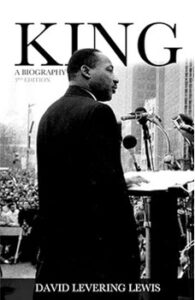
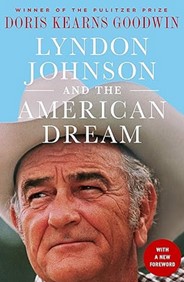
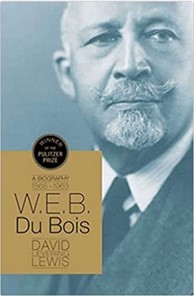
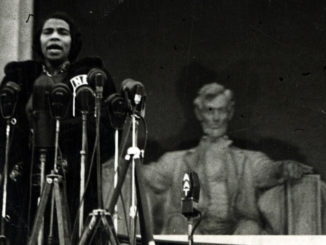
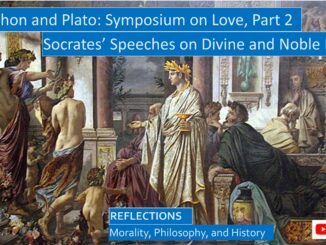
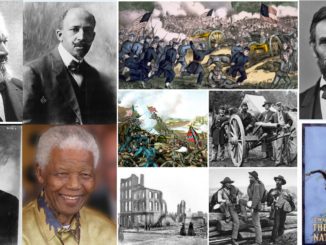
Be the first to comment